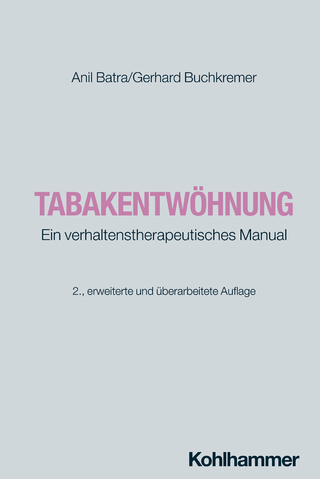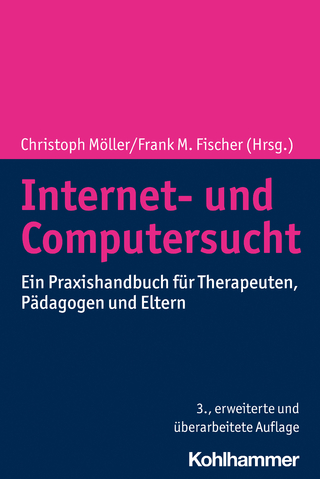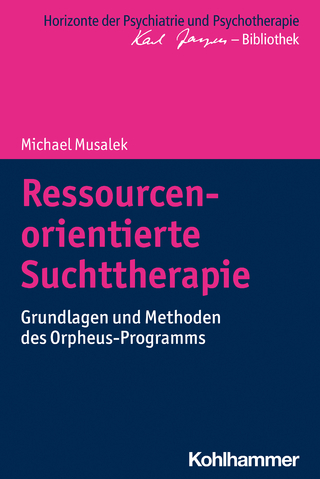
Prescription Drug Abuse
ABC-CLIO (Verlag)
978-1-4408-3978-8 (ISBN)
Evidence suggests that both adults and youth are abusing a wider range of prescription drugs and abusing them more frequently than has been the case in the past. Prescription drugs are the second most common class of drugs abused by Americans, more than twice as commonly abused as cocaine, and five times as commonly abused as heroin. This book provides readers with information about the specific health effects that can result from using certain types of medical chemicals, particularly opioid analgesics, stimulants, depressants, and hallucinogenics; explains the most important factors that have led to the growth of prescription drug problems; and reviews the current status of the issue in the United States and other nations.
Readers will learn about the dangers associated with the use of prescription drugs for nonmedical purposes, the methods that have been put in place and are being developed to prevent the abuse of prescription drugs, and the trends in prescription drug misuse, with possible explanations for these trends. The book also reviews some of the steps being taken by governments and other organizations and agencies to combat the problem of prescription drug abuse.
David E. Newton, EdD, has been a freelance writer of nonfiction books and ancillary materials for young adults for nearly 55 years.
Preface,
1 Background and History,
Drug Use in the Ancient World,
A Short History of Opium,
A Multitude of Opium Products,
Laudanum,
Morphine,
Other Natural Opiates,
Semisynthetic Opioids,
Synthetic Opioids,
Rising Concerns about the Opioids,
Opium Addiction among the Chinese and Other Immigrants,
Opium Addiction among Women,
Opium Availability,
Patent Medicines,
Legislative Responses,
Controlled Substance Act of 1970,
The Evolution of Prescription Drugs,
Prescription Drugs in the 21st Century,
Conclusion,
References,
2 Problems, Controversies, and Solutions,
Demographics,
Nonmedical Use of Prescription Drugs: Statistics,
Nonmedical Use of Prescription Drugs: Mortality and Morbidity Data,
Nonmedical Use of Prescription Drugs: First-Time Use,
The International Scene,
Misused Prescription Drugs,
Opioids,
Stimulants,
CNS Depressants,
Over-the-Counter Medications,
Prevention,
The Etiology of Prescription Drug Abuse,
Sources of Prescription Drugs,
Prevention Programs,
Tracking and Monitoring,
Proper Medication Disposal,
Enforcement,
Treatment,
Opioids,
Stimulants and Depressants,
Summary and Conclusion,
References,
3 Perspectives,
State Efforts to Curb the Prescription Drug Abuse Epidemic: Carmen A. Catizone,
Communicative Behavior: Nicholas E. Hagemeier,
A Perfect Storm for Prescription Drug Misuse: Kenneth M. Hale,
Prescription Drug Abuse: Ginger Katz,
The Dangers of Smart Drugs: College Students' Prescription Drug Addiction: Troy Keslar,
Fighting Prescription Opioid Abuse Shouldn't Increase Pain for Patients: Srinivas Nalamachu,
Prescription Drugs and the Brain: Maia Pujara,
Can Information Technology Help Curb Prescription Drug Abuse?: Jeremy Summers,
4 Profiles,
Alliance for Safe Online Pharmacies,
American Society of Addiction Medicine,
AWARXE,
Hale Boggs (1914–1972/1973),
Mary Bono (1961–),
Center for Lawful Access and Abuse Deterrence,
Community Anti-Drug Coalitions of America,
Thomas De Quincey (1785–1859),
Drug Enforcement Administration,
Carl Durham (1892–1974),
European Monitoring Centre for Drugs and Drug Addiction,
Francis B. Harrison (1873–1957),
Felix Hoffmann (1868–1946),
Hubert Humphrey (1911–1978),
The Medicine Abuse Project,
Mothers against Prescription Drug Abuse,
The National Alliance of Advocates for Buprenorphine Treatment,
National Association of State Controlled Substances Authorities,
National Coalition Against Prescription Drug Abuse,
National Council on Alcoholism and Drug Dependence, Inc.,
National Council on Patient Information and Education,
National Institute on Drug Abuse,
NOPE Task Force,
Office of National Drug Control Policy,
Pain Therapy Access Physicians Working Group,
PhRMA, the Pharmaceutical Research and Manufacturers of America,
Harold ("Hal") Rogers (1937–),
Friedrich Sertürner (1783–1841),
Substance Abuse and Mental Health Services Administration,
Charles E. Terry (1878–1945),
United Nations Office on Drugs and Crime,
Hamilton Wright (1867–1917),
5 Data and Documents,
Data,
Table 5.1. Prescription Drug Overdose Death Rates by Selected Characteristics (2008),
Table 5.2. Nonmedical Use of Any Psychotherapeutic Drug in the Past Month among Persons Aged 12 and Over, by Age, Sex, Race, and Race/Ethnicity: United States, Selected Years 2002–2012 (Percentage of Population),
Table 5.3. Rates of Drug Overdose Death, Nonmedical Use of Opioid Pain Relievers (OPR), and OPR Sales, by State (2008),
Table 5.4. Death Rates for Drug Poisoning and Drug Poisoning Involving Opioid Analgesics, by Sex, Age, Race, and Race/Ethnicity: United States, Selected Years 1999–2010 (Drug Poisoning Deaths Involving Opioid Analgesics per 100,000 Resident Population),
Table 5.5. Emergency Department (ED) Visits Involving Nonmedical Use of Pharmaceuticals, by Selected Drugs, 2011,
Table 5.6. Trends in Annual Prevalence of Use of Various Drug for Grades 8, 10, and 12 Combined (as Percentages),
Table 5.7. Trends in Harmfulness of Drugs as Perceived by 12th Graders (as Percentages),
Documents,
Opium Exclusion Act of 1909,
Harrison Narcotic Act (1914),
United States v. Jin Fuey Moy (1916) ,
United States v. Doremus (1919),
Webb v. United States (1919),
Durham-Humphrey Amendment (1951),
Controlled Substances Act (1970),
Ryan Haight Online Pharmacy Consumer Protection Act of 2008,
Prescription Monitoring Program. State of Oregon (2009),
Secure and Responsible Drug Disposal Act of 2010 (Public Law 111–273, 124 Stat. 2858),
Between Peril and Promise: Facing the Dangers of VA's Skyrocketing Use of Prescription Painkillers to Treat Veterans (2013),
Prescription Drug Monitoring Programs (2014),
State Doctor Shopping Laws,
6 Resources,
7 Chronology,
8 Glossary,
Index,
About the Author,
| Erscheint lt. Verlag | 7.12.2015 |
|---|---|
| Reihe/Serie | Contemporary World Issues |
| Zusatzinfo | 7 bw illus |
| Sprache | englisch |
| Maße | 152 x 229 mm |
| Gewicht | 652 g |
| Themenwelt | Geisteswissenschaften ► Psychologie ► Sucht / Drogen |
| Sozialwissenschaften ► Soziologie | |
| ISBN-10 | 1-4408-3978-6 / 1440839786 |
| ISBN-13 | 978-1-4408-3978-8 / 9781440839788 |
| Zustand | Neuware |
| Informationen gemäß Produktsicherheitsverordnung (GPSR) | |
| Haben Sie eine Frage zum Produkt? |
aus dem Bereich


